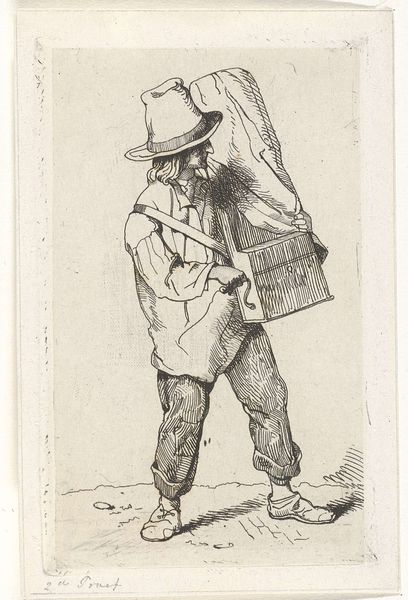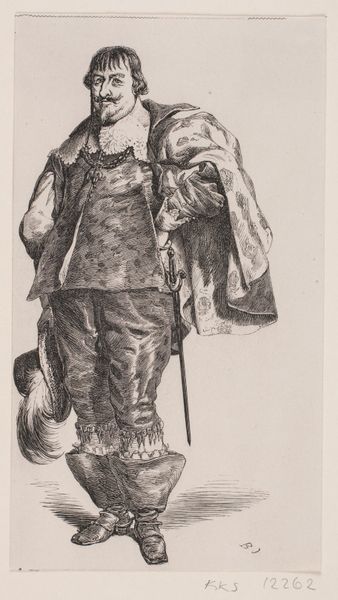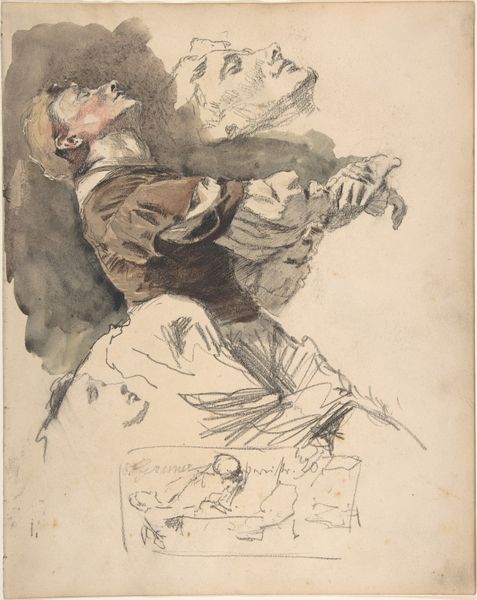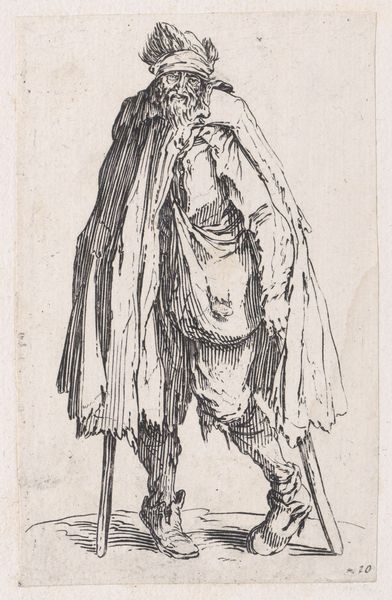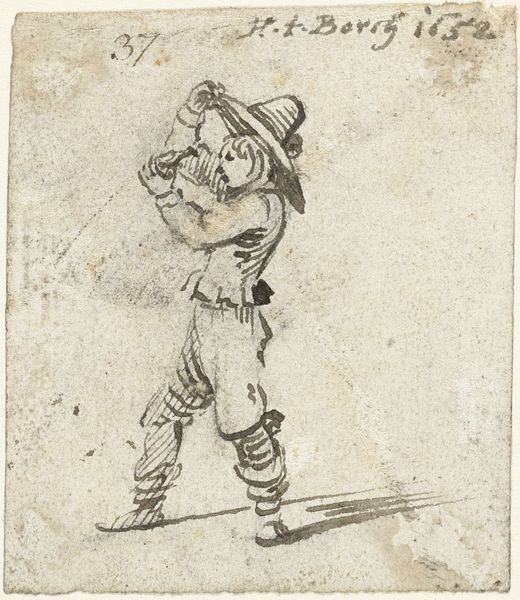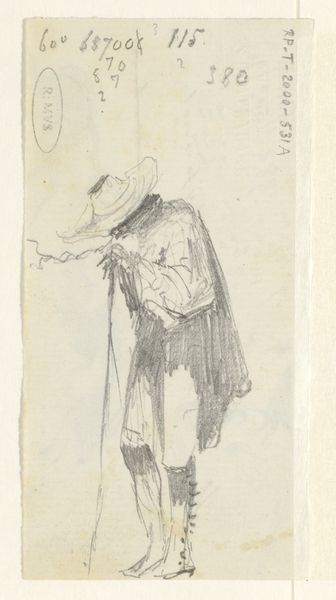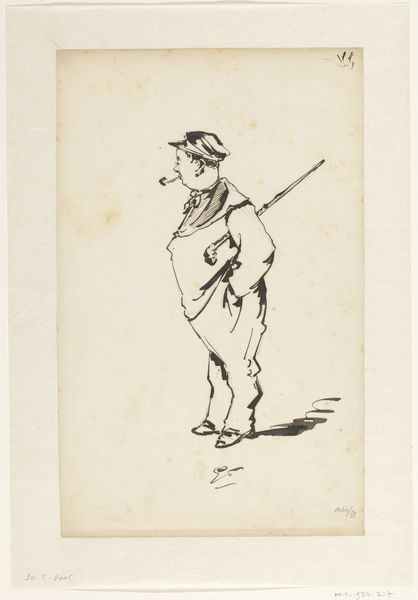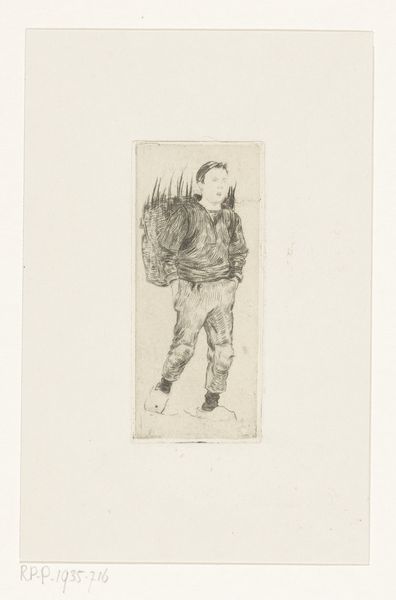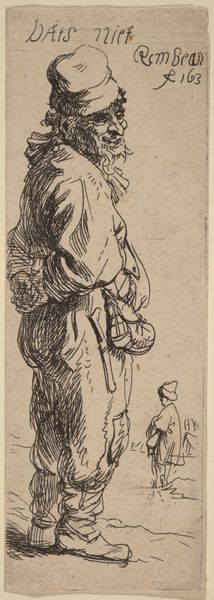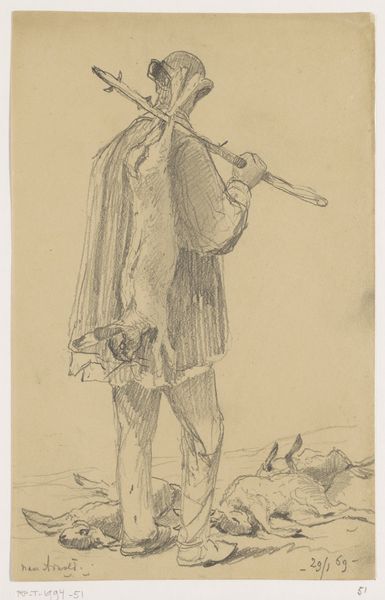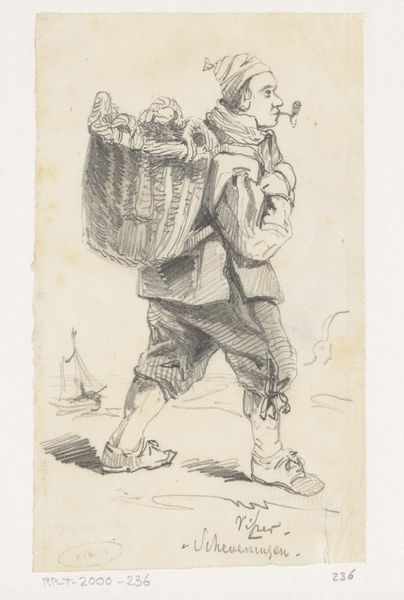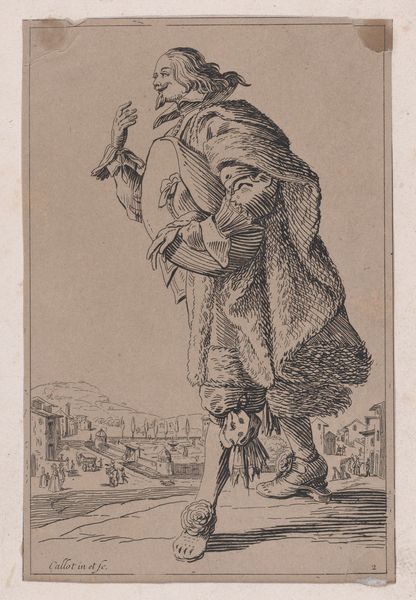
Mandolin Player in Popular Costume of Abruzzi c. 1877 - 1880
0:00
0:00
Dimensions: sheet: 30.1 × 21.2 cm (11 7/8 × 8 3/8 in.) mount: 33.1 × 23.7 cm (13 1/16 × 9 5/16 in.)
Copyright: National Gallery of Art: CC0 1.0
Editor: Here we have Francesco Paolo Michetti's "Mandolin Player in Popular Costume of Abruzzi," an ink drawing on paper, created sometime between 1877 and 1880. The quick, almost frantic lines give it a vibrant energy. How do you read the representation of regional identity in this piece? Curator: It’s fascinating to consider this drawing through a lens of cultural representation. Michetti wasn’t just depicting a mandolin player; he was actively engaging with the romanticized image of the Abruzzo region during a time of significant social and political change in Italy. Does the figure appear to be an accurate or a stereotyped representation? Editor: That’s a great question. The costume seems very detailed, but the face is more of a blur, almost like the man is a symbol rather than an individual. Is Michetti exoticizing rural life for an urban audience? Curator: Precisely! Consider who was consuming these images. Wealthy urban patrons, perhaps. What power dynamics are at play when an artist from a more privileged background captures the "essence" of a rural community? Were the people of Abruzzo given agency in the ways they were portrayed? This becomes a critical discussion about authenticity, representation, and cultural appropriation. What do you make of the sketchy quality, the unfinished feeling? Editor: Maybe the sketchiness reflects a fleeting, outsider's glimpse into that culture. It's like he's capturing a moment, an impression, rather than presenting a fully realized portrait. It raises uncomfortable questions about how we visually consume cultures different from our own. Curator: Indeed. And it forces us to question not only Michetti's intentions but also our own gaze as contemporary viewers. Are we perpetuating these same dynamics of cultural consumption when we admire this piece today? Editor: I hadn't thought about it that way. It really complicates my initial appreciation of the artwork, pushing me to consider its historical context and the power structures embedded within it. Curator: Exactly. And that critical engagement, that awareness of the intersecting narratives, is what makes art history so vital and relevant today.
Comments
No comments
Be the first to comment and join the conversation on the ultimate creative platform.
